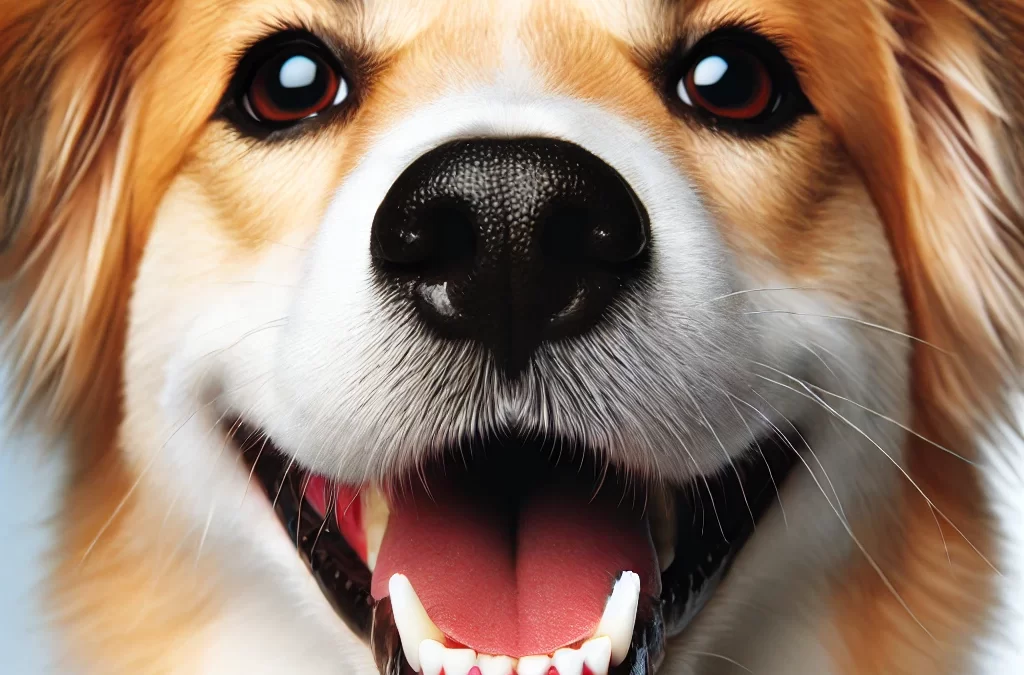
von TCMVET | 28. August 2024 | Krebs und Tumore bei Hunden
Trachealtumore bei Hunden sind zwar selten, können aber erhebliche gesundheitliche Probleme verursachen. Diese Tumore können aus verschiedenen Geweben innerhalb oder um die Trachea herum entstehen, was zu unterschiedlichen Symptomen führt und spezifische Behandlungsansätze erfordert. Das Verständnis der Arten von Trachealtumoren, ihrer Symptome und der verfügbaren Behandlungsmöglichkeiten ist für Hundebesitzer von entscheidender Bedeutung, um die beste Pflege für ihre Haustiere sicherzustellen.
Häufige Arten von Trachealtumoren bei Hunden
Trachealtumore bei Hunden können als gutartig oder bösartig eingestuft werden, wobei jeder Typ unterschiedliche Auswirkungen auf die Gesundheit des Hundes hat.
- Chondrome, Osteome und Osteochondrome: Dies sind die häufigsten Arten von gutartigen Trachealtumoren bei Hunden. Chondrome entstehen aus Knorpelgewebe, während Osteome aus Knochengewebe entstehen. Osteochondrome betreffen sowohl Knochen als auch Knorpel und kommen besonders häufig bei jüngeren Hunden vor, manchmal sogar bei Hunden, die jünger als ein Jahr sind. Glücklicherweise haben diese gutartigen Tumore oft eine gute Prognose, wenn sie operativ entfernt werden.
- Leiomyome und Polypen: Leiomyome sind gutartige Tumoren der glatten Muskulatur, und Polypen sind nicht-krebsartige Wucherungen, die sich im Trachealbereich entwickeln können. Beide Tumorarten haben bei entsprechender Behandlung im Allgemeinen eine günstige Prognose.
- Bösartige Trachealtumoren: Obwohl sie seltener vorkommen, können bösartige Tumoren in der Luftröhre schwerwiegend sein. Dazu gehören Plasmozytome, Osteosarkome (OSA), Chondrosarkome (CSA), Mastzelltumoren (MCT), Lymphosarkome (LSA), Plattenepithelkarzinome (SCC) und Rhabdomyosarkome. Jeder Typ erfordert unterschiedliche Behandlungsstrategien, wobei chirurgische Entfernung, Chemotherapie und Strahlentherapie mögliche Optionen sind.
Symptome von Trachealtumoren bei Hunden
Die Symptome von Trachealtumoren können je nach Größe und Lage des Tumors sowie je nachdem, ob er gutartig oder bösartig ist, variieren. Zu den häufigsten klinischen Symptomen gehören:
- Atembeschwerden: Hunde mit Trachealtumoren leiden häufig unter Atemnot, die sich als Atembeschwerden, Keuchen oder Stridor (ein hohes keuchendes Geräusch) äußern kann.
- Coughing: Ein weiteres häufiges Symptom ist anhaltender Husten, oft begleitet von Keuchen und schwerer Atmung.
- Swallowing Difficulties: In einigen Fällen, insbesondere wenn sich der Tumor in der Nähe des Rachens befindet, können Hunde Schluckbeschwerden haben, was zu Gewichtsverlust und Unterernährung führen kann.
- Voice Changes: Tumore im Kehlkopf- oder Rachenbereich können die Stimme eines Hundes beeinträchtigen und dazu führen, dass sie heiser oder verändert klingt.
- Palpable Mass: In einigen Fällen kann im Hals- oder Rachenbereich eine Masse ertastet werden, die auf das Vorhandensein eines Tumors hinweist.
Diese Symptome können durch Faktoren wie Aufregung, Stress, hohe Temperaturen oder körperliche Aktivität verschlimmert werden. Katzen vertragen Trachealtumore tendenziell besser als Hunde, da sie weniger zu Überanstrengung oder Aufregung neigen, die die Symptome verschlimmern können.
Behandlungsmöglichkeiten für Trachealtumoren bei Hunden
Die Behandlung von Trachealtumoren bei Hunden hängt von mehreren Faktoren ab, unter anderem von der Art und dem Ort des Tumors, dem allgemeinen Gesundheitszustand des Hundes und davon, ob der Tumor gut- oder bösartig ist.
- Operative Entfernung: Eine Operation ist oft die erste Behandlungsmethode, insbesondere bei gutartigen Tumoren wie Chondromen und Osteochondromen. Wenn der Tumor lokalisiert und zugänglich ist, kann eine chirurgische Entfernung kurativ sein.
- Chemotherapie: Bei bösartigen Tumoren kann eine Chemotherapie entweder als alleinige Behandlung oder in Verbindung mit einer Operation empfohlen werden. Chemotherapie ist besonders nützlich bei systemischen Krebserkrankungen wie Lymphosarkomen, die oft mehrere Bereiche des Körpers befallen.
- Strahlentherapie: Strahlung kann eingesetzt werden, um Tumore zu verkleinern oder Symptome zu lindern, insbesondere wenn eine Operation keine praktikable Option ist. Sie wird häufig zur Behandlung von Plattenepithelkarzinomen und anderen bösartigen Tumoren eingesetzt, die sich nur schwer operativ entfernen lassen.
- Palliativpflege: In Fällen, in denen eine kurative Behandlung nicht möglich ist, konzentriert sich die Palliativpflege auf die Linderung der Symptome und die Verbesserung der Lebensqualität des Hundes. Dazu können Medikamente zur Schmerz- und Entzündungslinderung sowie Therapien zur Linderung von Atembeschwerden gehören.
Früherkennung und Behandlung sind für die effektive Behandlung von Trachealtumoren von entscheidender Bedeutung. Regelmäßige tierärztliche Untersuchungen und die sofortige Beachtung von Anzeichen von Atemnot oder abnormalem Wachstum können die Prognose für Hunde mit Trachealtumoren erheblich verbessern.

von TCMVET | 25. August 2024 | Krebs und Tumore bei Hunden
Zahnfleischtumore bei Hunden können für jeden Tierhalter eine beunruhigende Diagnose sein. Diese Wucherungen, die von gutartig bis bösartig reichen können, führen oft zu Beschwerden, Schwierigkeiten beim Fressen und in schweren Fällen zu erheblichen gesundheitlichen Komplikationen. Während konventionelle Behandlungen wie Operationen und Chemotherapie die Lösung der Wahl sind, erkunden viele Tierhalter jetzt natürliche Therapien als ergänzenden Ansatz. In diesem Artikel werden wir uns mit der Rolle natürlicher Therapien bei der Behandlung von Zahnfleischtumoren bei Hunden befassen und die Vorteile von TCMVET Baituxiao hervorheben, einer vielversprechenden Kräuterformel, die auf der traditionellen chinesischen Veterinärmedizin (TCVM) basiert.
Zahnfleischtumore bei Hunden verstehen
Zahnfleischtumore bei Hunden können sich als Knoten oder abnormale Gewebewucherungen am Zahnfleisch manifestieren. Einige dieser Tumore sind gutartig, wie z. B. Epuliden, während andere bösartig sein können, wie z. B. Melanome oder Plattenepithelkarzinome. Unabhängig von der Art sind eine frühzeitige Erkennung und eine proaktive Behandlung der Schlüssel zur Verbesserung der Ergebnisse.
Die Rolle natürlicher Therapien
Natürliche Therapien konzentrieren sich darauf, die körpereigenen Heilungsprozesse zu unterstützen, Entzündungen zu reduzieren und das allgemeine Wohlbefinden zu verbessern. Bei Zahnfleischtumoren zielen natürliche Behandlungen darauf ab:
- Reduce Tumor Growth: Bestimmte Kräuter und Nahrungsergänzungsmittel können dazu beitragen, die Vermehrung abnormaler Zellen zu verlangsamen.
- Stärkung des Immunsystems: Ein robustes Immunsystem ist von entscheidender Bedeutung, um das Tumorwachstum zu kontrollieren und Metastasen zu verhindern.
- Improve Quality of Life: Natürliche Heilmittel können Beschwerden lindern, Schmerzen reduzieren und die allgemeine Vitalität unterstützen, insbesondere bei älteren Hunden.
TCMVET Baituxiao: Ein ganzheitlicher Kräuteransatz
Eine der wichtigsten Naturtherapien, die zunehmend Aufmerksamkeit erregen, ist TCMVET Baituxiao, eine Mischung aus traditionellen chinesischen Kräutern zur Behandlung von Massen und Knoten, insbesondere im Rahmen der Tumorbehandlung. Basierend auf den Prinzipien der traditionellen chinesischen Veterinärmedizin wurde TCMVET Baituxiao entwickelt, um:
- Stagnation auflösen: Laut TCVM sind Tumore oft das Ergebnis stagnierender Energie (Qi) und Bluts. Baituxiao enthält Kräuter, die helfen, diese Blockaden aufzulösen, den Energiefluss zu verbessern und die Größe der Wucherungen zu verringern.
- Entzündungen und Schwellungen reduzieren: Die entzündungshemmenden Eigenschaften der Kräuter in Baituxiao können helfen, die mit Zahnfleischtumoren verbundenen Beschwerden und Schwellungen zu lindern.
- Boost the Immune System: Ein starkes Immunsystem ist für die Kontrolle des Tumorwachstums unerlässlich. Baituxiao enthält Kräuter, die dafür bekannt sind, die Immunfunktion zu stärken und dem Körper dabei zu helfen, auf natürliche Weise gegen die abnormale Zellvermehrung vorzugehen.
- Unterstützt die allgemeine Vitalität: Die ganzheitliche Formel von Baituxiao zielt nicht nur auf den Tumor ab, sondern fördert auch die allgemeine Gesundheit und stellt sicher, dass Ihr Hund während der Behandlung seine Energie und eine gute Lebensqualität behält.
Integration natürlicher Therapien in die konventionelle Behandlung
Natürliche Therapien können zwar wirksam sein, wirken aber am besten, wenn sie mit konventionellen Behandlungen kombiniert werden. Beispielsweise kann TCMVET Baituxiao zusammen mit einer Operation oder Strahlentherapie eingesetzt werden, um die Genesung zu unterstützen und die Ergebnisse zu verbessern. Es ist wichtig, vor Beginn einer neuen Behandlung Ihren Tierarzt zu konsultieren, insbesondere bei Tumoren.
Weitere zu berücksichtigende Naturheilverfahren
Zusätzlich zu TCMVET Baituxiao können auch andere natürliche Therapien bei der Behandlung von Zahnfleischtumoren bei Hunden helfen:
- Dietary Changes: Eine Ernährung Ihres Hundes, die reich an Antioxidantien, Omega-3-Fettsäuren und entzündungshemmenden Nahrungsmitteln ist, kann das Immunsystem unterstützen und Entzündungen reduzieren.
- Herbal Supplements: Kräuter wie Kurkuma, Mariendistel und Reishi-Pilze sind für ihre krebshemmenden Eigenschaften bekannt und können in die Ernährung Ihres Hundes aufgenommen werden.
- Akupunktur: Akupunktur, ein weiterer Bestandteil der TCVM, kann Schmerzen lindern und den Energiefluss verbessern, was insbesondere bei Hunden mit fortgeschrittenen Tumoren nützlich ist.
- Homeopathy: Manche Tierbesitzer haben Erfolg mit homöopathischen Mitteln, die auf den Ausgleich der natürlichen Energie des Körpers und die gezielte Behandlung bestimmter Tumorarten abzielen.
Die Bedeutung einer frühen und konsequenten Pflege
Bei Hunden, bei denen Zahnfleischtumoren diagnostiziert wurden, ist ein frühzeitiges Eingreifen entscheidend. Durch einen ganzheitlichen Ansatz, der konventionelle Behandlung mit natürlichen Therapien wie TCMVET Baituxiao kombiniert, können Sie Ihrem Hund die besten Chancen auf einen positiven Ausgang geben. Regelmäßige Kontrolluntersuchungen, Zahnpflege und konsequente Überwachung sind für die Behandlung dieser Erkrankung unerlässlich.
Fazit: Ein ausgewogener Ansatz zur Tumorbehandlung
Zahnfleischtumore bei Hunden sind ein ernstes Gesundheitsproblem, müssen aber kein Todesurteil sein. Indem Sie natürliche Therapien in den Behandlungsplan Ihres Hundes integrieren, können Sie ihm zusätzliche Unterstützung bieten, die nicht nur den Tumor bekämpft, sondern auch die allgemeine Gesundheit verbessert. TCMVET Baituxiao ist eine natürliche, ganzheitliche Option für Hunde, die mit dieser Herausforderung konfrontiert sind, und bietet Tierbesitzern, die nach einer ausgewogeneren und weniger invasiven Behandlungsmethode suchen, Hoffnung.
Letztlich ist jeder Hund einzigartig und die richtige Kombination von Therapien erfordert sorgfältige Überlegungen und eine Beratung mit Ihrem Tierarzt. Mit dem richtigen Ansatz können Sie sicherstellen, dass der Weg Ihres Hundes durch diese Erkrankung so angenehm und positiv wie möglich ist.

von TCMVET | 25. August 2024 | Krebs und Tumore bei Hunden
Wenn es um die Mundgesundheit von Hunden geht, denken die meisten Tierbesitzer an Plaque, Zahnstein und die Wichtigkeit des Zähneputzens. Ein weniger bekanntes Problem, das sich jedoch unbemerkt auf das Wohlbefinden Ihres Hundes auswirken kann, sind Zahnfleischtumore. Diese Wucherungen werden oft übersehen, können gutartig bis bösartig sein und die Lebensqualität eines Hundes erheblich beeinträchtigen.
Was sind Zahnfleischtumoren bei Hunden?
Zahnfleischtumore bei Hunden sind Wucherungen, die sich am Zahnfleisch oder in den umliegenden Bereichen im Maul eines Hundes entwickeln. Sie können als kleine Knötchen oder größere, auffällige Klumpen auftreten und ähneln oft einem Stück überschüssigem Zahnfleischgewebe. Diese Tumore können zwar bei jeder Rasse auftreten, ältere Hunde und bestimmte Rassen wie Boxer und Golden Retriever sind jedoch anfälliger.
Arten von Zahnfleischtumoren bei Hunden
Das Verständnis der Art des Tumors ist entscheidend für die Bestimmung der geeigneten Behandlung. Zahnfleischtumore bei Hunden werden in drei Haupttypen eingeteilt:
- Epuliden (gutartige Tumoren): Dies ist die häufigste Art von Zahnfleischtumoren und sie sind normalerweise nicht bösartig. Epuliden können fibromatös, ossifizierend oder akanthomatös sein. Obwohl sie gutartig sind, können sie Beschwerden verursachen, wenn sie so groß werden, dass sie das Essen oder Kauen beeinträchtigen.
- Bösartige Melanome: Diese sind aggressiv und haben eine hohe Wahrscheinlichkeit der Ausbreitung (Metastasierung). Melanome beginnen oft im Zahnfleisch oder im Gewebe rund um den Mund und können schnell lebensbedrohlich werden, wenn sie nicht behandelt werden.
- Plattenepithelkarzinome: Diese Tumoren sind ebenfalls bösartig, breiten sich aber weniger aus als Melanome. Allerdings können sie lokal invasiv sein und Knochen und anderes Gewebe zerstören.
Symptome: Worauf Sie achten sollten
Einen Zahnfleischtumor frühzeitig zu erkennen, kann schwierig sein. Hier sind die wichtigsten Anzeichen, auf die Sie achten sollten:
- Ungewöhnliche Knoten oder Wucherungen auf dem Zahnfleisch.
- Schlechter Atem das auch bei regelmäßiger Reinigung bestehen bleibt.
- Schwierigkeiten beim Kauen oder Abneigung gegen das Essen härterer Nahrungsmittel.
- Blutungen aus dem Mund oder Blut im Speichel.
- Zähne verlieren nicht mit dem Alter oder Zahnerkrankungen verbunden.
Wenn Sie eines dieser Symptome bei sich bemerken, ist ein sofortiger Besuch beim Tierarzt zur Diagnose unerlässlich.
Diagnose und Behandlung: Wie geht es weiter?
Zur Diagnose wird in der Regel eine Biopsie durchgeführt, bei der ein kleiner Teil des Tumors unter dem Mikroskop untersucht wird. Bildgebungsverfahren wie Röntgenaufnahmen können erforderlich sein, um festzustellen, ob der Tumor das umliegende Gewebe oder die Knochen befallen hat.
Behandlungsmöglichkeiten:
- Operative Entfernung: Bei gutartigen Tumoren führt eine operative Entfernung häufig zur Heilung. Bei bösartigen Tumoren kann jedoch ein aggressiverer chirurgischer Eingriff erforderlich sein.
- Strahlentherapie: Dies wird häufig bei Tumoren angewendet, die sich nur schwer vollständig entfernen lassen oder bösartig sind.
- Chemotherapie: Bei Zahnfleischtumoren kommt es zwar seltener vor, kann aber empfohlen werden, wenn der Krebs bereits gestreut hat.
- Innovative Therapien: In den letzten Jahren ist das Interesse an natürlichen Nahrungsergänzungsmitteln und integrativen Therapien, die konventionelle Behandlungen unterstützen können, gestiegen. So haben sich beispielsweise bestimmte Kräutermischungen als vielversprechend erwiesen, um Entzündungen zu lindern und das Immunsystem zu stärken. Sie bieten Hunden, die konventionelle Krebsbehandlungen erhalten, zusätzliche Unterstützung.
Die Bedeutung der Früherkennung
Eine der effektivsten Methoden zur Behandlung von Zahnfleischtumoren bei Hunden ist die Früherkennung. Regelmäßige zahnärztliche Untersuchungen beugen nicht nur Zahnerkrankungen vor, sondern ermöglichen es Tierärzten auch, ungewöhnliche Wucherungen frühzeitig zu erkennen. Als Tierbesitzer kann es einen großen Unterschied machen, wenn Sie sich angewöhnen, das Maul Ihres Hundes auf Anomalien zu untersuchen.
Prävention und Wartung: Ein ganzheitlicher Ansatz
Während einige Tumore genetisch bedingt unvermeidbar sind, kann die Aufrechterhaltung einer allgemeinen Mundgesundheit das Risiko senken. Regelmäßiges Zähneputzen, die Verwendung von Zahnpflegeprodukten und eine ausgewogene Ernährung mit vielen Antioxidantien können dazu beitragen, das Zahnfleisch gesund zu halten. Darüber hinaus probieren einige Tierbesitzer natürliche Nahrungsergänzungsmittel aus, die angeblich die Mundgesundheit fördern, indem sie Entzündungen reduzieren und das Immunsystem unterstützen.
Abschließende Gedanken: Bleiben Sie informiert und proaktiv
Zahnfleischtumore bei Hunden mögen auf den ersten Blick wie ein kleines Problem erscheinen, aber sie können zu erheblichen Komplikationen führen, wenn sie unbehandelt bleiben. Indem Sie informiert bleiben und proaktiv vorgehen, können Sie Probleme frühzeitig erkennen und sicherstellen, dass Ihr Hund die bestmögliche Pflege erhält. Auch wenn dieses Thema vielleicht nicht so breit diskutiert wird wie andere Gesundheitsprobleme bei Hunden, kann es für Ihren pelzigen Freund von entscheidender Bedeutung sein, sich darüber im Klaren zu sein.
Denken Sie daran: Jeder Hund verdient ein glückliches, gesundes Lächeln – und ein wenig Aufmerksamkeit für die Zahngesundheit kann viel dazu beitragen, dies zu erreichen!

von TCMVET | 21. August 2024 | Krebs und Tumore bei Hunden
Die Pflege eines Hundes, der sich einer Krebsbehandlung unterzieht, umfasst mehr als nur medizinische Eingriffe. Die Anpassung ihrer Umgebung und ihres Lebensstils kann ihre Genesung und ihr allgemeines Wohlbefinden erheblich beeinflussen. Dieser Artikel untersucht, wie die Verringerung der Belastung durch Umweltgifte, die Steigerung der körperlichen Aktivität und die Minimierung von Stress zu einer gesünderen, unterstützenderen Umgebung für Hunde beitragen können, die gegen Krebs kämpfen.
Reduzierung der Belastung durch Umweltgifte
Einer der wichtigsten Schritte bei der Unterstützung eines Hundes mit Krebs ist die Minimierung seiner Belastung durch schädliche Chemikalien und Giftstoffe. So können Sie eine sauberere und sicherere Lebensumgebung für Ihr Haustier schaffen:
- Vermeiden Sie chemische Reiniger: Wechseln Sie in Ihrem Zuhause zu natürlichen, ungiftigen Reinigungsprodukten. Chemische Reiniger können schädliche Dämpfe und Rückstände freisetzen, die Ihr Hund einatmen oder verschlucken könnte. Entscheiden Sie sich für umweltfreundliche Alternativen, die sowohl für Haustiere als auch für Menschen sicher sind.
- Begrenzen Sie die Pestizidbelastung: Halten Sie Ihren Hund von Bereichen fern, die mit Pestiziden oder Herbiziden behandelt wurden. Diese Chemikalien können schädlich sein, insbesondere für Hunde mit geschwächtem Immunsystem. Erwägen Sie die Anwendung natürlicher Schädlingsbekämpfungsmethoden in Ihrem Garten oder Hof.
- Wählen Sie sichere Haustierprodukte: Achten Sie auf die Produkte, die Sie für Ihren Hund verwenden, wie Shampoos, Flohbehandlungen und Pflegeprodukte. Wählen Sie Produkte, die frei von aggressiven Chemikalien sind und speziell für Haustiere mit empfindlichen Gesundheitsbedürfnissen entwickelt wurden.
Mehr Bewegung und Aktivität
Körperliche Aktivität ist für die Gesundheit Ihres Hundes unerlässlich, insbesondere während einer Krebsbehandlung. Regelmäßige Bewegung bietet zahlreiche Vorteile:
- Stärkung der Immunität: Bewegung stärkt das Immunsystem Ihres Hundes und macht ihn widerstandsfähiger gegen Krankheiten. Selbst leichte Aktivitäten wie Spazierengehen oder sanftes Spielen können sich positiv auf seine Gesundheit auswirken.
- Steigerung der körperlichen Stärke: Für Hunde, die sich einer Krebsbehandlung unterziehen, ist es wichtig, körperlich stark zu bleiben. Bewegung hilft, die Muskelmasse zu erhalten, die Durchblutung zu verbessern und die allgemeine Vitalität zu unterstützen.
- Verbesserung der psychischen Gesundheit: Regelmäßige Aktivität kann die Symptome von Depressionen oder Angstzuständen bei Hunden lindern und ihnen geistige Anregung und ein Gefühl der Normalität vermitteln. Dies ist besonders während des Behandlungsstresses wichtig.
Stress minimieren für eine bessere Erholung
Für Hunde, die an Krebs erkrankt sind, ist es wichtig, eine stressfreie Umgebung zu schaffen. Stress kann sich negativ auf ihr Immunsystem auswirken und die Genesung verlangsamen. Hier sind einige Strategien, die Ihnen helfen, Ihren Hund ruhig und entspannt zu halten:
- Sorgen Sie für eine gleichbleibende Routine: Hunde gedeihen mit Routine. Die Einhaltung eines konsistenten Tagesplans für Fütterung, Spaziergänge und Ruhe hilft, Ängste abzubauen und vermittelt ein Gefühl der Stabilität.
- Integrieren Sie Entspannungstechniken: Regelmäßiges Streicheln, sanftes Bürsten und Massieren können Ihrem Hund helfen, sich zu entspannen und Stress abzubauen. Diese Aktivitäten beruhigen Ihren Hund nicht nur, sondern stärken auch Ihre Bindung zu ihm.
- Schaffen Sie eine friedliche Umgebung: Sorgen Sie dafür, dass Ihr Hund einen ruhigen, gemütlichen Platz hat, an dem er ungestört ruhen kann. In dieser Umgebung sollten keine lauten Geräusche, kein übermäßiger Fußgängerverkehr und keine anderen Stressfaktoren vorhanden sein.
Die Unterstützung eines Hundes während der Krebsbehandlung umfasst mehr als nur medizinische Versorgung. Indem Sie die Belastung durch Umweltgifte reduzieren, mehr Bewegung bekommen und Stress minimieren, können Sie eine gesündere und förderlichere Umgebung schaffen, die Genesung und Wohlbefinden fördert. Diese Lebensstilanpassungen können die Lebensqualität Ihres Hundes in dieser schwierigen Zeit erheblich verbessern.

von TCMVET | 21. August 2024 | Krebs und Tumore bei Hunden
Die allgemeine Gesundheit Ihres Haustiers zu unterstützen, geht über Ernährung und Bewegung hinaus. Integrative Therapien wie Akupunktur und Massagetherapie können eine entscheidende Rolle bei der Förderung des Wohlbefindens spielen, insbesondere bei Haustieren, die an chronischen Erkrankungen, Schmerzen oder den Nebenwirkungen von Behandlungen wie Chemotherapie leiden. Dieser Artikel untersucht, wie Akupunktur und Massagetherapie die Gesundheit Ihres Haustiers fördern und seine Lebensqualität verbessern können.
Die Rolle der Akupunktur bei der Gesundheit von Haustieren
Bei der Akupunktur, einer Methode aus der traditionellen chinesischen Medizin, werden dünne Nadeln in bestimmte Punkte des Körpers eingeführt. Diese Therapie ist dafür bekannt, dass sie die Energie des Körpers (Qi) ausgleichen und die Heilung fördern kann. Für Haustiere kann Akupunktur mehrere wichtige Vorteile bieten:
- Pain Relief: Akupunktur ist besonders wirksam bei der Schmerzbehandlung, insbesondere bei Haustieren, die an Arthritis, Hüftdysplasie oder chronischen Schmerzzuständen leiden. Durch die Stimulation des Nervensystems kann Akupunktur Endorphine freisetzen, die natürlichen Schmerzmittel des Körpers, und so Linderung ohne die Nebenwirkungen von Medikamenten verschaffen.
- Reduzierung der Nebenwirkungen einer Chemotherapie: Haustiere, die eine Chemotherapie erhalten, leiden häufig unter Nebenwirkungen wie Übelkeit, Müdigkeit und Appetitlosigkeit. Akupunktur kann helfen, diese Symptome zu lindern, den Behandlungsprozess erträglicher zu machen und das allgemeine Wohlbefinden des Haustiers zu verbessern.
- Unterstützung der allgemeinen Gesundheit: Akupunktur hilft nicht nur bei der Schmerzbehandlung, sondern auch bei der Verbesserung der Durchblutung, der Entzündungshemmung und der Stärkung des Immunsystems. Diese Vorteile tragen zur allgemeinen Gesundheit und Vitalität eines Haustiers bei und machen sie zu einem wertvollen Instrument der ganzheitlichen Haustierpflege.
Die Vorteile der Massagetherapie für Haustiere
Massagetherapie kann, ähnlich wie bei Menschen, das körperliche und emotionale Wohlbefinden eines Haustieres erheblich steigern. Regelmäßige Massagesitzungen können folgende Vorteile bieten:
- Schmerz- und Unbehagenslinderung: Massagetherapie hilft, Schmerzen und Beschwerden zu lindern, indem sie Muskelverspannungen löst und Entspannung fördert. Dies ist besonders vorteilhaft für Haustiere mit Erkrankungen wie Arthritis, Muskelverletzungen oder solche, die sich von einer Operation erholen.
- Verbesserte Durchblutung: Massagen stimulieren die Durchblutung, was für die Versorgung des Gewebes mit Nährstoffen und Sauerstoff sowie den Abtransport von Giftstoffen unerlässlich ist. Eine verbesserte Durchblutung unterstützt eine schnellere Heilung und erhält die Gesundheit von Muskeln und Gelenken.
- Stress- und Angstlinderung: Regelmäßige Massagen können Stress und Angst bei Haustieren reduzieren und zu einem ruhigeren und entspannteren Verhalten führen. Dies ist besonders nützlich für Haustiere mit Verhaltensproblemen oder solche, die aufgrund von Krankheiten oder Umweltveränderungen Angst haben.
- Verbesserte Bindung: Massagesitzungen bieten Tierbesitzern eine hervorragende Gelegenheit, eine Bindung zu ihren Haustieren aufzubauen und die emotionale Verbindung und das Vertrauen zwischen ihnen zu stärken.
Integrieren Sie Akupunktur und Massage in die Pflegeroutine Ihres Haustiers
Die Einbeziehung von Akupunktur und Massagetherapie in die Pflegeroutine Ihres Haustiers kann einen umfassenden Ansatz für das Wohlbefinden bieten. Bei diesen Therapien geht es nicht nur um die Behandlung bestimmter Beschwerden; sie konzentrieren sich auf die Erhaltung der allgemeinen Gesundheit, die Vorbeugung künftiger Probleme und die Verbesserung der Lebensqualität Ihres Haustiers. Es ist wichtig, mit qualifizierten Fachleuten zusammenzuarbeiten, die auf Tierakupunktur und -massage spezialisiert sind, um sicherzustellen, dass Ihr Haustier die beste Pflege erhält.
Akupunktur und Massagetherapie bieten einen ganzheitlichen Ansatz zur Verbesserung der Gesundheit und des Wohlbefindens Ihres Haustiers. Indem sie Schmerzen lindern, Stress abbauen und die allgemeine Gesundheit unterstützen, können diese Therapien die Lebensqualität Ihres Haustiers erheblich verbessern. Egal, ob Ihr Haustier an einer chronischen Krankheit leidet oder Sie einfach sein Wohlbefinden steigern möchten, diese integrativen Therapien sind eine Überlegung wert.

von TCMVET | 18. August 2024 | Krebs und Tumore bei Hunden
Lymphome sind eine der häufigsten Krebsarten bei Hunden, insbesondere bei älteren Hunden. Während traditionelle Behandlungen wie Chemotherapie oft notwendig sind, greifen viele Tierbesitzer auf natürliche Heilmittel zurück, um diese Behandlungen zu ergänzen. Selbstheilung, auch bekannt als Xia Ku Cao in der Traditionellen Chinesischen Medizin (TCM) ist ein solches Kraut, das aufgrund seiner potenziellen Vorteile bei der Unterstützung der Behandlung von Lymphomen bei Hunden Aufmerksamkeit erregt. Dieser Artikel untersucht, wie Selbstheilung als Zusatztherapie für Hunde eingesetzt werden kann, die gegen Lymphome kämpfen.
Hunde-Lymphom verstehen
Das Hundelymphom ist eine Krebsart, die in den Lymphozyten entsteht, einer Art weißer Blutkörperchen, die eine entscheidende Rolle im Immunsystem spielen. Dieser Krebs kann in verschiedenen Formen auftreten und die Lymphknoten, die Milz, die Leber und andere Organe befallen. Zu den Symptomen gehören häufig geschwollene Lymphknoten, Lethargie, Gewichtsverlust und Appetitlosigkeit. Eine frühzeitige Diagnose und Behandlung sind für die Bekämpfung der Krankheit unerlässlich.
Die Rolle der Selbstheilung (Xia Ku Cao) bei der Lymphombehandlung
Selbstheilung (Prunella vulgaris), oder Xia Ku Cao In der TCM ist es ein Kraut, das traditionell wegen seiner entzündungshemmenden, immunstärkenden und tumorhemmenden Eigenschaften verwendet wird. Obwohl es kein Heilmittel für Lymphome ist, kann Self-Heal zur Unterstützung herkömmlicher Behandlungen eingesetzt werden, wodurch möglicherweise deren Wirksamkeit gesteigert und die Lebensqualität des Hundes verbessert wird.
Unterstützung des Immunsystems
Einer der wichtigsten Vorteile von Self-Heal ist seine Fähigkeit, das Immunsystem zu unterstützen. Bei Hunden, die sich einer Chemotherapie gegen Lymphome unterziehen, kann das Immunsystem geschwächt werden, wodurch der Körper anfälliger für Infektionen wird und die Heilung langsamer erfolgt. Die immunstärkenden Eigenschaften von Self-Heal helfen, die natürlichen Abwehrkräfte des Hundes zu stärken und bieten zusätzliche Unterstützung während der anstrengenden Chemotherapie.
Entzündungshemmende und antioxidative Wirkung
Lymphome verursachen häufig Entzündungen in den betroffenen Organen und Geweben, was zu Beschwerden und weiteren gesundheitlichen Komplikationen führt. Self-Heal hat starke entzündungshemmende Eigenschaften, die helfen können, diese Entzündung zu reduzieren und möglicherweise Schmerzen und Beschwerden bei Hunden mit Lymphomen zu lindern. Darüber hinaus helfen seine antioxidativen Wirkungen, oxidativen Stress zu bekämpfen, einen Zustand, der Krebs und andere chronische Krankheiten verschlimmern kann.
Potentielle Anti-Tumor-Eigenschaften
Obwohl noch mehr Forschung erforderlich ist, deuten einige Studien darauf hin, dass die Selbstheilung möglicherweise Antitumoreigenschaften besitzt, die sie bei der Behandlung von Krebsarten wie Lymphomen nützlich machen könnten. In Laborstudien wurde gezeigt, dass das Kraut das Wachstum bestimmter Krebszellen hemmt. Wenn es als Teil eines ganzheitlichen Behandlungsplans verwendet wird, kann die Selbstheilung dazu beitragen, das Fortschreiten von Lymphomen zu verlangsamen und die allgemeine Gesundheit zu unterstützen.
So integrieren Sie die Selbstheilung in den Behandlungsplan Ihres Hundes
Self-Heal kann Hunden auf verschiedene Arten verabreicht werden:
- Tinkturen: Ein flüssiger Extrakt von Self-Heal kann dem Futter oder Wasser Ihres Hundes hinzugefügt werden.
- Kapseln: Self-Heal-Kapseln können direkt verabreicht oder mit Futter vermischt werden.
- Kräutertees: Kochen Sie aus Self-Heal einen milden Tee und geben Sie ihn für einen natürlicheren Ansatz in das Wasser Ihres Hundes.
Es ist wichtig, einen Tierarzt mit Erfahrung in der Kräutermedizin zu konsultieren, um die richtige Dosierung und Verabreichungsmethode für den spezifischen Zustand Ihres Hundes zu bestimmen. Die Anwendung von Self-Heal sollte traditionelle Krebsbehandlungen wie Chemotherapie ergänzen und nicht ersetzen.
Sicherheit und Überlegungen
Obwohl Self-Heal für Hunde im Allgemeinen unbedenklich ist, sollte es immer unter tierärztlicher Aufsicht verwendet werden, insbesondere bei schweren Erkrankungen wie Lymphomen. Übermäßiger Gebrauch oder falsche Dosierung können zu Nebenwirkungen führen. Stellen Sie außerdem sicher, dass die von Ihnen verwendeten Self-Heal-Produkte von hoher Qualität und frei von Verunreinigungen sind.
Self-Heal (Xia Ku Cao) bietet eine natürliche Möglichkeit, die Behandlung von Lymphomen bei Hunden zu unterstützen, insbesondere durch die Stärkung des Immunsystems, die Verringerung von Entzündungen und die potenzielle Hemmung des Tumorwachstums. Als Zusatztherapie kann es die Wirksamkeit traditioneller Behandlungen steigern und das allgemeine Wohlbefinden von Hunden verbessern, die gegen Lymphome kämpfen. Arbeiten Sie immer eng mit Ihrem Tierarzt zusammen, um die sichere und wirksame Verwendung von Kräuterheilmitteln im Behandlungsplan Ihres Hundes sicherzustellen.






